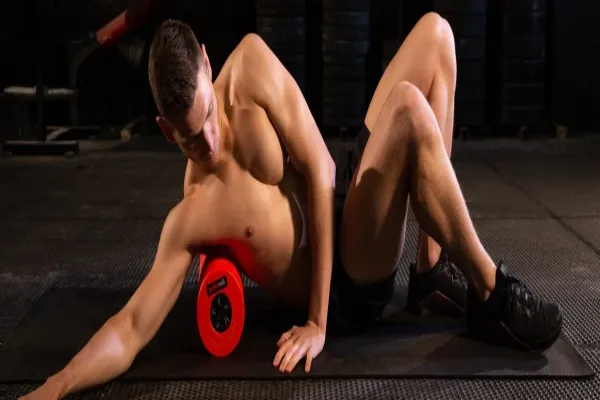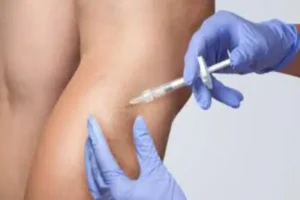Recovery Legs: Simple Techniques to Speed Up Muscle Healing


Slow post-workout recovery is the bane of fitness enthusiasts and professional athletes worldwide.
Delayed muscle healing can cause annoying downtimes, impacting your overall fitness goals. It could also diminish your performance in a crucial match, giving your opponents an easy win.
Slow muscle healing can set off a chain of other unpleasant reactions. The fact that your brain focuses on your sluggish recovery pace might increase the risks of injury, particularly during intensive exercises or combat sports.
If you work in a fairly hazardous environment, lingering fatigue from your last evening’s workouts can lead to devastating workplace accidents.
Fortunately, there are multiple ways to speed up muscle recovery. This post looks at eight such interventions.

Photo Credit: IceBoundEssentials.com
1. Use Compression Massage Boots
Compression massage boots are inflatable workout equipment that utilize compression to stimulate blood circulation. They go by many other names, including recovery legs, compression wraps, and pneumatic compression wraps.
Recovery legs play a critical role in improving blood circulation from the heart to the legs, and back to the heart. One study found that using compression therapy, which recovery boots are based on, can improve blood circulation and reduce muscle swelling.
As mentioned, the wraps use air pressure to compress venous and arterial fluids from the leg muscles and back into the circulatory system. This mechanism creates a temporary vacuum, which is shortly filled by blood from the lungs.
The blood that flows in from the lungs is rich in oxygen and minerals, which are both essential for quick recovery.
Meanwhile, the fluids pushed back into the circulatory system take with them toxic metabolic wastes like lactic acid. They also help relieve edema.
Although recovery boots are commonly worn around the legs, you can use them on your arms too.
However, pneumatic compression boots aren’t made equal. Consider factors like size, comfort, portability, and battery life while choosing the best recovery legs for you.
Some high-end compression boots come with adjustable settings. This enables you to focus the wraps on specific muscles for targeted recovery.
2. Stay Hydrated
Going into a gym session without a water bottle would be suicidal.
But unknown to many fitness buffs, water doesn’t just help you stay hydrated during strenuous workouts. It can also enhance post-workout muscle recovery.
Water facilitates the efficient transportation of oxygenated blood and essential nutrients to your muscles, while helping to flush out metabolic wastes.
Water can also soothe soreness and inflammation, the two major adverse effects of rigorous workouts.
Besides, it supports various cellular functions necessary for a holistic muscle recovery. Those include maintaining electrolyte balance and aiding protein synthesis.
3. Practice Mindful Dieting
Like water, the foods that we consume can speed up or slow down muscle recovery.
Experts recommend high-protein diets like eggs and soybeans. Protein forms the building blocks for all tissues in the body, which explains its role in muscle repair.
After strenuous workouts, it’s also best to recharge with complex carbohydrates.
Carbohydrates are energy-giving foods. They help replace depleted glycogen levels.
Fresh fruits and leafy vegetables are other workout-friendly foods. Both are rich in dietary fiber, which helps relieve muscle cramping due to constipation.
Don’t forget anti-inflammatory foods like vegetable oils and seafood.

Photo Credit: Pixabay.com
4. Complement With Massage
Regular massage can help optimize the effects of recovery legs.
Massage stimulates both blood and lymphatic circulation. As noted, this helps nourish your muscles with depleted nutrients while eliminating metabolic waste products.
Besides, the physical action of massage may ease muscle tension. It helps soften tighter tissues, which can be particularly beneficial when dealing with post-workout edema.
Some findings also suggest that massage may activate the signaling of feel-good neurotransmitters, such as dopamine and serotonin.
A surge in the levels of these chemicals can improve muscle healing by directing the brain’s focus away from the sore tissues.
5. Get Adequate Sleep
Restful sleep can speed up muscle recovery in various ways.
First off, sleep helps soothe pain and inflammation.
Previous studies have noted that people who get a good night’s sleep report lower pain sensitivity and reduced local inflammation.
Besides, most of the body’s self-healing processes occur during sleep. That includes releasing muscle-repairing growth hormones. These hormones help to repair the micro-tears that our muscles experience during rigorous workouts.
Sleep also replenishes depleted energy reserves and facilitates waste removal, both of which are critical for faster muscle recovery.
The conventional rule is to get 7 – 9 hours of continuous sleep every night.

Photo Credit: Pixabay.com
6. Stay Active
It’s counterintuitive to engage in more exercise when you’re trying to recover from a previous workout session. However, mounting evidence suggests that low-intensity activities can accelerate muscle recovery.
Light exercise improves recovery by increasing blood circulation, boosting metabolism, and reducing muscle soreness. It also enhances your range of motion, preventing a total shutdown from strenuous workouts.
Further, research shows that mild exercise can trigger the production of endorphins. These are feel-good hormones that function similarly as serotonin – improving your overall mental state.
7. Administer Cold Therapy
Humans have used cold therapy from time immemorial to relieve muscle soreness. The practice involves near-complete immersion (typically up to the neck level) into chilly water or ice.
Like most techniques on this list, cold therapy soothes aching and inflammation by boosting blood circulation.
When you first step into a cold plunge or ice bath, the frigid conditions immediately cause your arteries and veins to constrict. But that’s only a temporary response to the cold shock.
A few seconds later, the narrowed blood vessels dilate, sending a rush of blood throughout the body.
8. Shun Alcohol and Cigarette
Alcohol is inherently harmful to your health.
But while this statement is usually viewed in the context of binge drinking, experts discourage alcohol intake between periods of intense workouts.
Alcohol can raise your stress levels. Consequently, intense anxiety can lead to fragmented sleep, ultimately impacting your overall recovery.
Note that alcohol has no nutritional value. Therefore, it only uses up the space that would have otherwise been occupied by useful dietary supplements.
Tobacco is even more harmful than alcohol, generally speaking as well as within the context of post-workout recovery.
According to research, smoking tobacco increases your susceptibility to muscle injury, bone fracture, and sleep deprivation.

Photo Credit: Pixabay.com
Accelerating Muscle Recovery for Optimized Workouts
Muscle fatigue may be crippling. However, it’s exciting to know that there’s a cure.
Implementing the above pointers can help expedite your post-workout recovery and get you back on your feet.
It’s even more relieving to know that most of these techniques are all-natural. Therefore, they pose close to ZERO risks of adverse effects.
If you prefer to also incorporate dietary supplements into your workout routine, research each product carefully and pick those that are free from known toxins.







